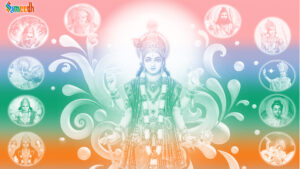According to Devi Bhagavatam, there is a story why only Vishnu takes incarnations.

Once, Asura guru Shukracharya went to penance for Lord Shiva for Mritasanjivani. He asked them to take refugee in his father Bhrigu’s Ashram. So, Asuras stayed in Bhrigu’s Ashram.
Devas came to know about where Rakshasas are talking refugee and went to fight with them. Rakshasas seeing devas coming for fight went to Bhrigu’s wife to save them as even Bhrigu was not present in the Ashram. She assured to save them from Devas
Bhrigu’s wife, then with her power made Indra and other gods immobile. Indra prayed Lord Vishnu to save them.
When Lord Vishnu came to Bhrigu’s Ashram, Bhrigu’s wife made him to immobile for a second. Lord Vishnu, then kills Bhrigu’s wife.
After sometime, when Bhrigu returns to Ashram and learns what happened, he was enraged on Lord Vishnu for killing his wife. So, he curses Lord Vishnu to take many avatars on Earth and live among humans.
One of the key aspects of Lord Vishnu’s divine nature is his ability to incarnate on Earth in human form whenever there is a decline in dharma and an increase in adharma (unrighteousness). These incarnations are known as “avatars.” Lord Vishnu has taken on various avatars to restore balance and uphold righteousness in the world. The most well-known avatars of Lord Vishnu are:
- Lord Ram: Lord Vishnu incarnated as Lord Rama to defeat the demon king Ravan and establish dharma.
- Lord Krushna: Lord Vishnu incarnated as Lord Krishna, who played a central role in the Mahabharata and delivered the Bhagavad Gita, a sacred text that imparts spiritual wisdom.
- Lord Buddha: Some traditions consider Lord Buddha as an avatar of Lord Vishnu. His teachings emphasized compassion and non-violence.
- Kalki: It is believed that Lord Vishnu will appear in the future as Kalki, the tenth and final avatar, to restore dharma at the end of the current age.
These avatars are taken by Lord Vishnu out of his divine grace and compassion for humanity. Each avatar serves a specific purpose and plays a crucial role in maintaining cosmic order. Lord Vishnu’s avatars are distinct in their characteristics, teachings, and deeds, but they all share the common goal of upholding dharma and protecting the righteous.
While Lord Vishnu is prominently associated with incarnating on Earth in human form, other deities in Hinduism also take on incarnations and forms when necessary. For example, Goddess Parvati has incarnations like Durga and Kali, and Lord Shiv has incarnations such as Hanuman. However, Lord Vishnu’s avatars are perhaps the most well-known and extensively documented in Hindu scriptures.